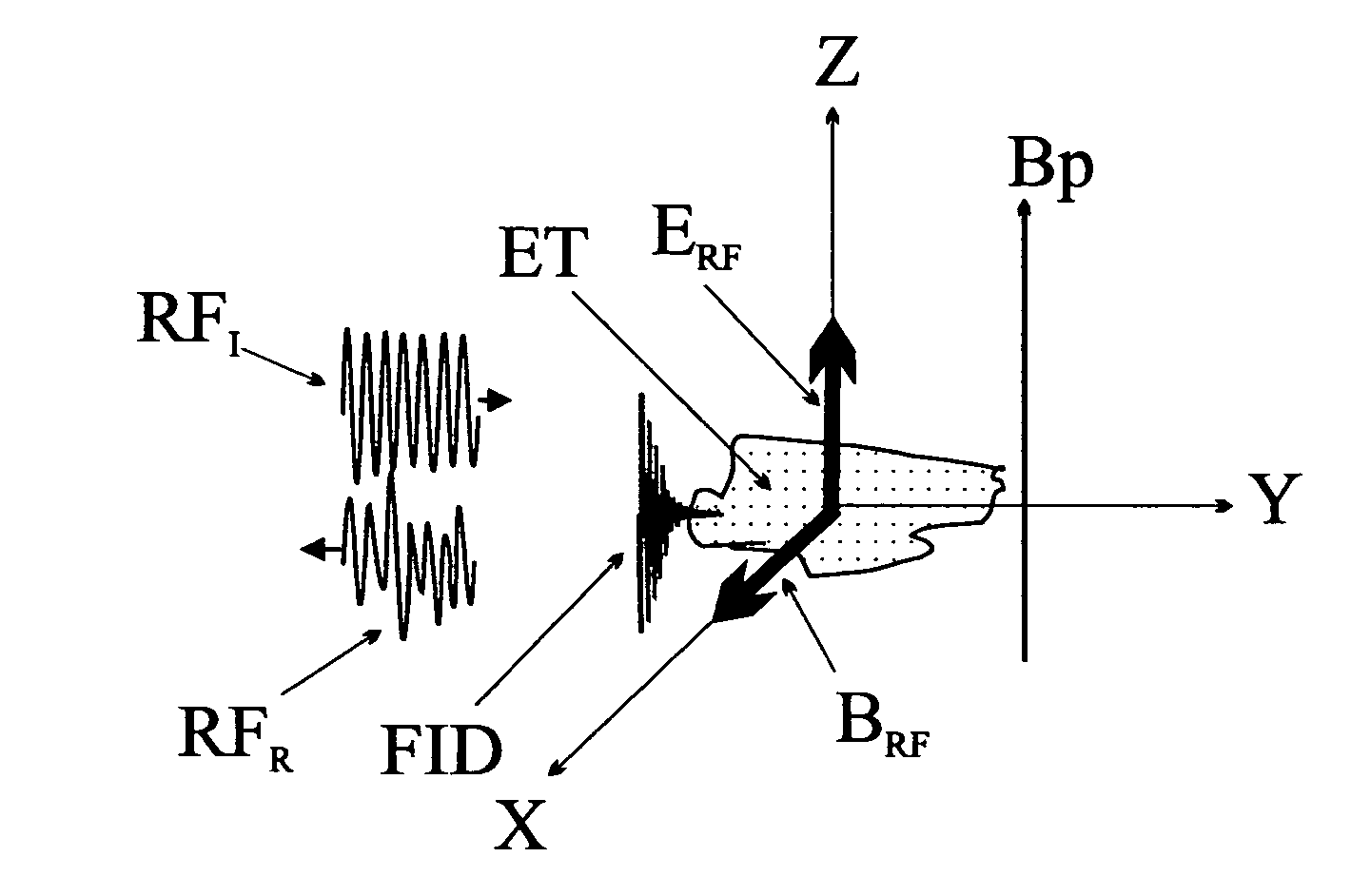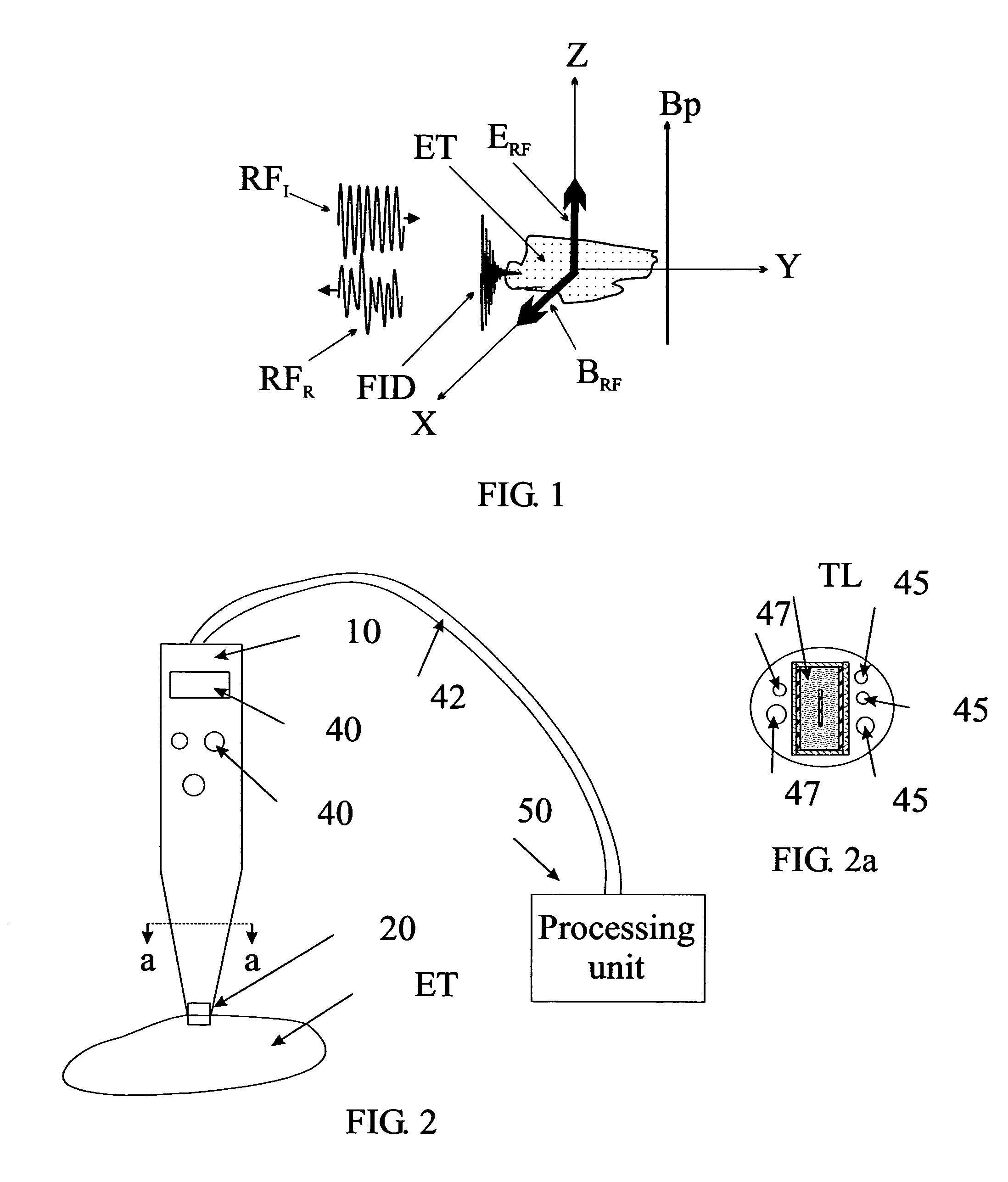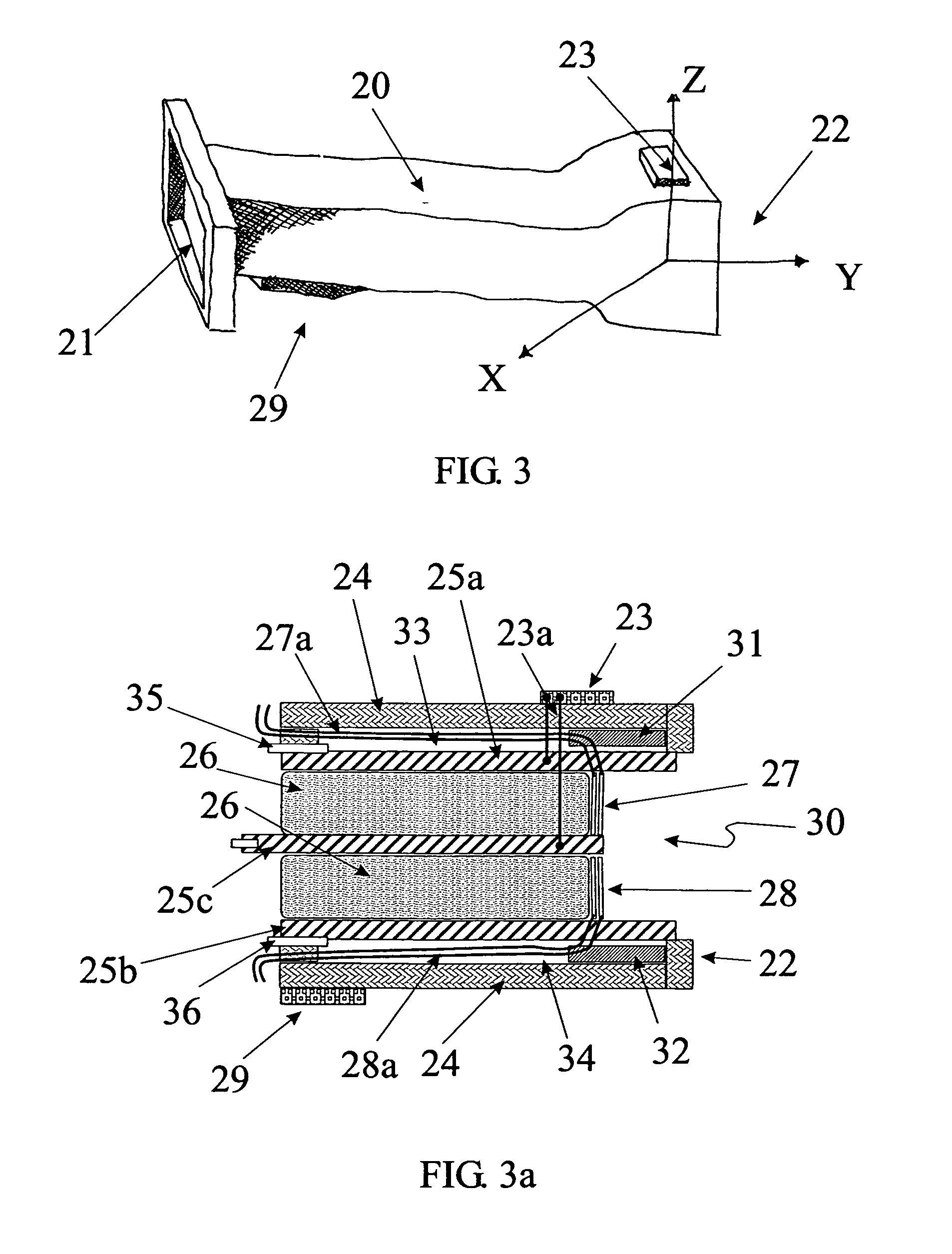Method and apparatus for examining a substance, particularly tissue, to characterize its type
a technology of tissue and a substance, applied in the field of methods and apparatus for examining a substance, can solve the problems of not being suitable for use during an operation procedure, affecting the success rate of tumor removal procedures, and increasing the failure rate of surgery, so as to achieve superior reliability, widen the base for comparison, and facilitate implementation
- Summary
- Abstract
- Description
- Claims
- Application Information
AI Technical Summary
Benefits of technology
Problems solved by technology
Method used
Image
Examples
Embodiment Construction
Basic Principle of Operation (FIG. 1)
[0064]The basic way by which the present invention realizes the multi-modality approach is by combining EI sensing and NMR sensing into one integrated sensor head that collects signals corresponding to both phenomena substantially simultaneously (i.e., within a short, e.g., up to a few seconds) from the same tissue volume (the examined tissue volume). Using the combined modalities sensor, a calculation of the dielectric properties of the examined tissue volume can be derived, as well as the nuclear magnetic resonance properties, known as NMR. Furthermore, the change in the dielectric properties of the examined tissue volume induced by the presence of the nuclear spin polarizing magnetic field is also measured, forming a third modality. Tissue characterization or recognition is performed by using algorithms based on statistical analysis of the measured parameters, and by identifying similarities between the set of measured parameters and sets of p...
PUM
 Login to View More
Login to View More Abstract
Description
Claims
Application Information
 Login to View More
Login to View More - R&D
- Intellectual Property
- Life Sciences
- Materials
- Tech Scout
- Unparalleled Data Quality
- Higher Quality Content
- 60% Fewer Hallucinations
Browse by: Latest US Patents, China's latest patents, Technical Efficacy Thesaurus, Application Domain, Technology Topic, Popular Technical Reports.
© 2025 PatSnap. All rights reserved.Legal|Privacy policy|Modern Slavery Act Transparency Statement|Sitemap|About US| Contact US: help@patsnap.com



